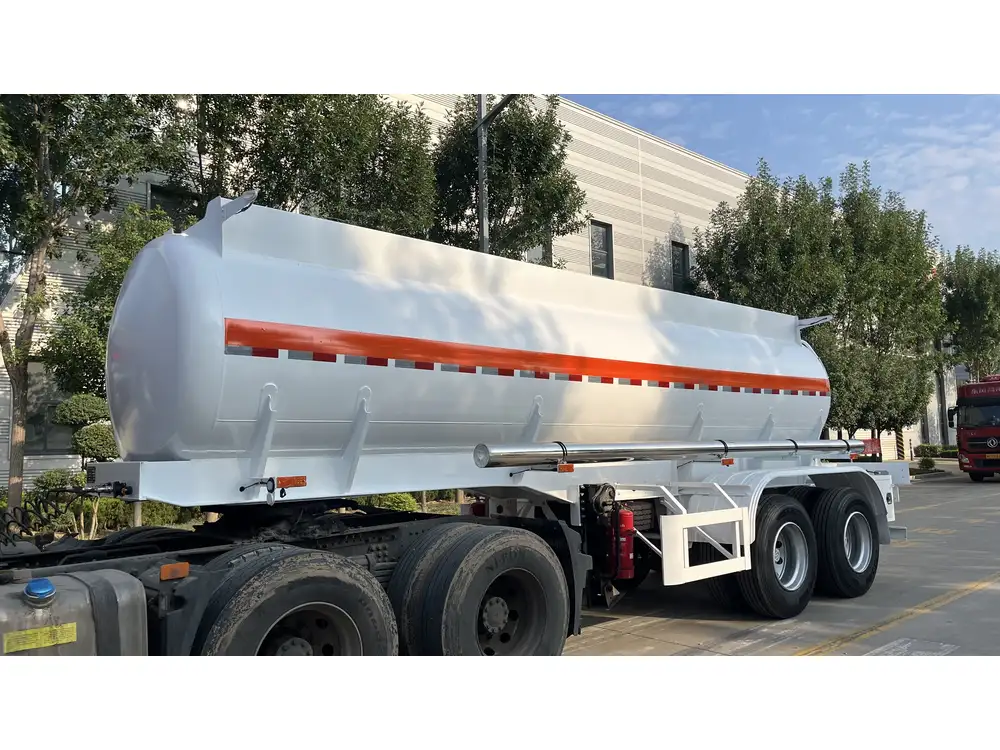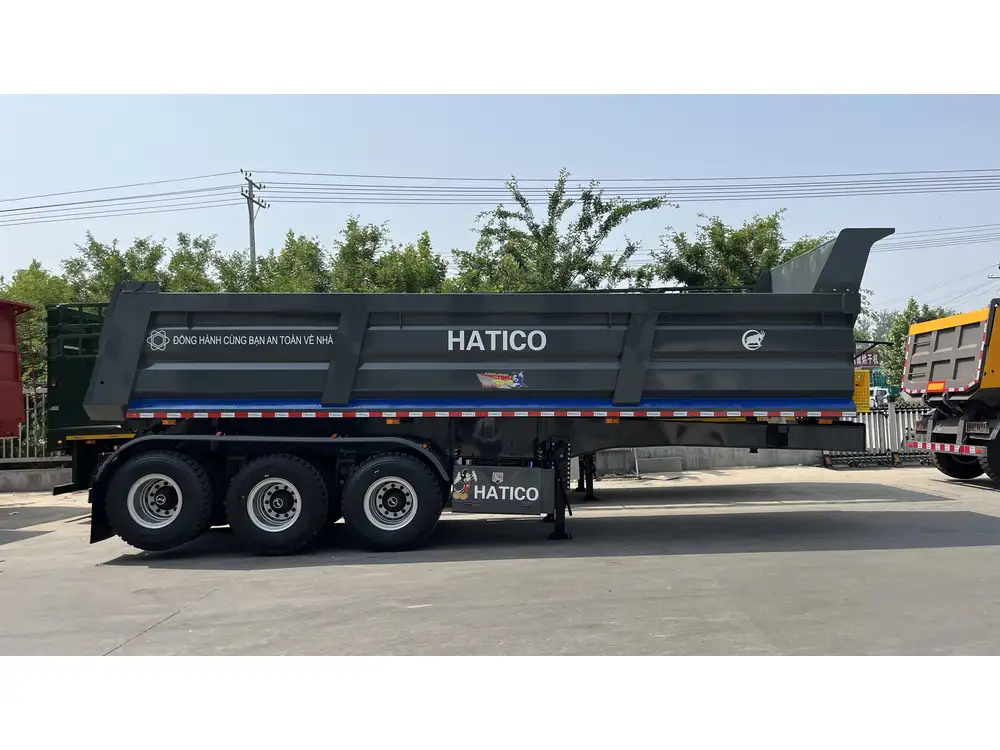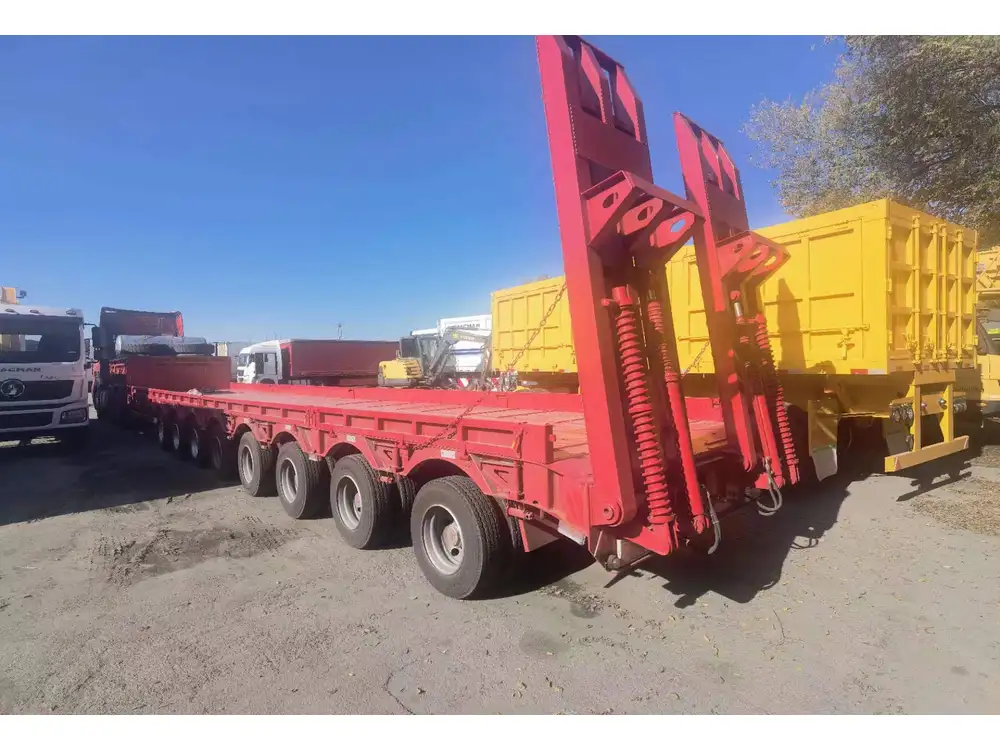Flatbed trailers are among the most versatile and widely used types of trailers in various industries, especially in the transportation of goods that are oversized or difficult to load onto closed trailers. While their versatility is clear, one crucial aspect that often comes into question is the standard height of a flatbed trailer. Understanding this concept is essential for manufacturers, drivers, and logistics planners alike, as it influences loading, safety, and compliance with regulations.
The Standard Height of Flatbed Trailers: What You Need to Know
Typical Height Measurements
The standard height of most flatbed trailers varies, but it generally falls within the range of 48 to 55 inches from the ground to the trailer’s bed. This height can be influenced by several factors, including the type of trailer, the manufacturer’s specifications, and the intended cargo. Below are some common types of flatbed trailers with their respective height measurements:
| Type of Flatbed Trailer | Standard Height |
|---|---|
| Standard Flatbed | 48-53 inches |
| Lowboy Trailers | 18-24 inches |
| Step Deck Trailers | 37-42 inches |
| Removable Gooseneck (RGN) | 18-24 inches |

Factors Influencing Standard Height
Design Variations: Different designs cater to specific cargo types. For example, lowboy trailers, designed for heavy equipment, have a lower height to accommodate taller loads while maintaining stability.
Manufacturer Specifications: Each manufacturer may have unique design criteria, leading to variations in height. It’s crucial to consider these specifications when selecting a trailer for specific hauling needs.
Load Regulations: Height regulations can vary widely across regions and jurisdictions. It is essential for operators to comply with local laws to avoid penalties.
The Importance of Flatbed Trailer Height
Loading and Unloading Efficiency
The height of a flatbed trailer plays a critical role in loading and unloading processes. A standard height ensures that:
- Forklifts and Cranes: Equipment designed for unloading can easily access the trailer without modifications.
- Ramp Utilization: Proper height permits the use of standard loading ramps, keeping unloading operations efficient and safe.

Safety Considerations
Height impacts the overall safety of transportation. Key safety factors include:
- Center of Gravity: A lower trailer height generally provides a lower center of gravity, which enhances stability during transport.
- Accident Risk: Overheight loads can increase the risk of accidents, especially on roadways with low bridges or overpasses. Understanding standard height can help operators avoid potential hazards.
Common Questions Related to Flatbed Trailer Heights
What Are the Implications of Overheight Loads?
Overheight loads pose significant challenges. Generally, drivers are required to secure permits for transporting loads that exceed standard height limitations. Implications include:
- Increased Costs: Securing permits may incur additional expenses, and overheight loads often require specialized routes.
- Safety Risks: Higher loads can shift during transport, leading to a greater risk of tipping or losing cargo.
- Regulatory Penalties: Non-compliance with height regulations can result in fines or vehicle impoundment.

How Do You Measure Flatbed Trailer Height?
To accurately measure the height of a flatbed trailer, follow these steps:
- Ensure the trailer is on level ground.
- Use a measuring tape to record the distance from the ground to the top of the trailer bed. This method provides an accurate reading of the trailer’s height.
Choosing the Right Flatbed Trailer Height for Your Needs
Factors to Consider When Selecting a Flatbed Trailer
Selecting the appropriate flatbed trailer involves several considerations in addition to height. Here are pivotal factors to evaluate:
Types of Cargo: Assess the nature of the cargo to be transported, including dimensions, weight, and handling requirements.
Transportation Regulations: Understand local and state regulations regarding height limitations, ensuring compliance to mitigate risks.
Operational Environment: Identify the terrain and road conditions your trailer will frequently navigate, as these impact loading and unloading procedures.
Customization Options: Some manufacturers offer customization for trailer height based on customer requirements. This feature is especially beneficial for unique cargo specifications.

Load Securement Standards for Flatbed Trailers
An often-overlooked aspect when discussing trailer height is the importance of securement methods. Properly securing cargo is crucial for safety, especially given the height and load distribution. The following are standard techniques to consider:
- Using Tie-Downs: Straps, chains, or ropes should be rated for the weight of the load and fastened adequately to prevent shifting during transit.
- Cross-Tying: Employing a crisscross pattern with straps can offer additional stability and ensure the load remains secure.
- Edge Protectors: These are used to guard against wear on straps and prevent slippage, especially for heavier cargo.
Innovations Impacting Flatbed Trailer Design and Height
The trailer industry is undergoing innovations that might change future standards regarding trailer height and performance:
Low-Profile Designs
With advancements in trailer engineering, manufacturers are developing low-profile designs to maximize efficiency in loading and accessibility, effectively altering traditional height norms.

Modular Trailers
Emerging modular trailer designs allow users to adjust height and dimensions based on cargo needs dynamically. This innovation can lead to an increase in versatility and efficiency.
Lightweight Materials
The use of lightweight materials coupled with advanced engineering has resulted in a new generation of flatbed trailers that maintain structural integrity while potentially reducing overall height.
Conclusion: Making Informed Decisions on Flatbed Trailer Heights
Understanding the standard height of flatbed trailers is paramount for ensuring efficiency, safety, and compliance within transport logistics. By evaluating various factors for height selection, operators can select the right trailer for their unique needs, catering effectively to the demands of their cargo while adhering to stringent regulations.
As the industry evolves, staying informed about changes in manufacturing standards, design innovations, and technological advancements will empower operators to make wise decisions that enhance operational performance. Ensure consistency in securing cargo, comply with regulations related to height, and always consider safety as a top priority.
The landscape of flatbed trailers continues to expand, and knowledge is the bridge that connects you to making effective choices in this arena.



